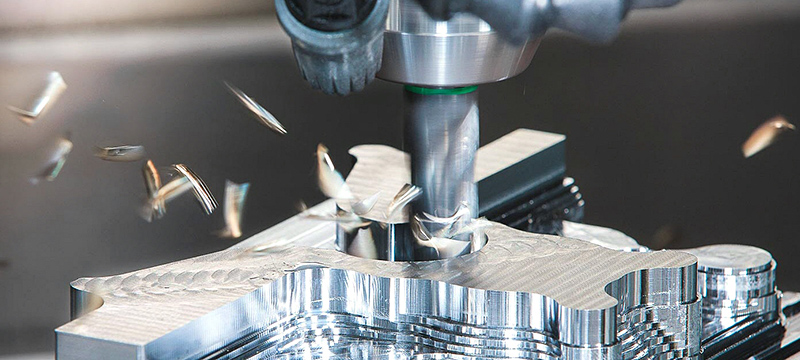
Precision manufacturing is critical in producing sensitive equipment, where even small errors can have significant consequences. In this field, accuracy, consistency, and attention to detail are paramount. Computer numerical control (CNC) machining is a key technology in this context, transforming digital blueprints into intricate parts with unmatched precision. In sectors where errors might have severe consequences, such as aerospace, medical, and automotive, the role of CNC machining is essential.
Let’s unravel the capabilities and innovations of CNC machining that make it a cornerstone of modern precision manufacturing.
Advantages Of Cnc Machining In Precision Manufacturing
CNC machining’s primary advantage is exceptional precision, achieving accuracy levels unmatched by manual processes. This is crucial for components where slight deviations can lead to failure. It offers remarkable repeatability, ensuring each part is identical, which is crucial in mass production. Its efficiency is another benefit, as CNC machines operate continuously with minimal supervision, reducing production times and costs.
In addition to its precision and efficiency, CNC machining, which significantly accelerates the prototype creation process with rapid prototype machining, stands as a pivotal element in modern manufacturing. This aspect of CNC technology significantly accelerates the process of creating prototypes, streamlining the journey from concept to product. Rapid prototype machining is especially valuable in dynamic industries where the speed of development and testing is crucial, such as in the medical and aerospace sectors.
Utilizing CNC for rapid prototyping enables manufacturers to quickly produce physical models from digital designs, facilitating rapid testing and iteration. This capability is not just about speed; it ensures high accuracy and allows for swift implementation of design changes. The integration of rapid prototype machining within CNC processes highlights the technology’s role in supporting faster and more efficient product development cycles, contributing to the CNC machining market’s projected growth.
Applications In Sensitive Equipment Production
CNC machining is a versatile and precise manufacturing process used across various industries. It involves the use of computers to control machine tools, ensuring high accuracy in producing parts and components. This technology is particularly crucial in sectors where precision is paramount. Because CNC machining can deal with a variety of materials and construct intricate shapes, it is essential for creating dependable, high-quality products.
In the medical industry, CNC machining is particularly vital. It’s used for making implantable medical devices like hip implants and heart valves, as well as surgical tools such as scissors and forceps that need precise machining. This technique also creates parts for electronic medical equipment, such as components for MRI scanners. The accuracy of CNC machining is essential in the medical industry, particularly in micromachining, where tiny, exact features are required for devices like stents and catheters.
Just as crucial is CNC machining in the aerospace sector. Critical components of aircraft and spacecraft, such as engine parts like turbine blades and structural elements like wing spars, are made with it. This process is key for manufacturing parts that must be highly precise and strong enough to handle the stresses of flight. CNC machining also allows for the production of detailed interior and exterior trim pieces for aircraft.
Challenges And Solutions In Cnc Machining For Sensitive Equipment
The challenges in CNC machining for delicate equipment include choosing the right material, designing for manufacturing, and upholding strict tolerances. The equipment’s lifetime and functionality depend heavily on the materials chosen. For medical devices, materials range from metals like titanium to bio-grade plastics, chosen based on their application, especially for implantable devices.
In aerospace, materials such as heat-resistant alloys and nonmetal composites are used for parts that endure high stresses during flight. Designing functional and manufacturable parts requires a deep understanding of machining capabilities. Maintaining tight tolerances is essential, especially in aerospace, where even minor errors can have significant repercussions. Solutions involve leveraging expertise in material science, engineering design, and process control and utilizing advanced CAD/CAM software to ensure precision and reliability.
Innovations And Future Trends In Cnc Machining
CNC machining is evolving with technological advancements like AI integration and increased automation, leading to higher precision and efficiency. These advancements suggest a future where CNC machining could become more autonomous, reducing human intervention and revolutionizing manufacturing processes. The sector is expected to grow significantly, with predictions indicating a rise from $95 billion in 2022 to $154 billion by 2032.
Furthermore, the increasing emphasis on sustainability is pushing the development of more energy-efficient CNC machining processes, aligning with global environmental goals. These innovations collectively point toward a more efficient, reliable, and sustainable future for CNC machining in various industries.
Conclusion
CNC machining is pivotal in precision manufacturing, especially for sensitive equipment. Understanding its mechanisms, benefits, applications, and challenges is key to appreciating its role in modern manufacturing. The continuous evolution and technological advancements in CNC machining point to a bright future, with significant growth projected in the coming years. This technological revolution not only enhances precision and efficiency but also opens new possibilities for manufacturing sensitive equipment.
The post Precision Manufacturing For Sensitive Equipment With CNC Machining appeared first on IoT Business News.




More Stories
China’s Geespace Launches Eleven Low-orbit Satellites to Build Geely Future Mobility Constellation
Improve the Guest Experience in Your Hotel with These IoT Solutions in 2024
A Brief History of Early IoT